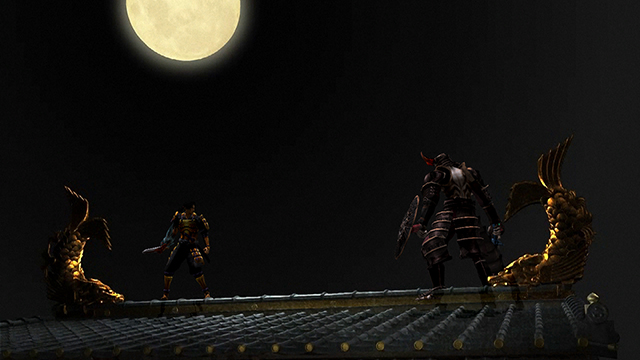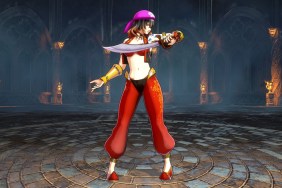Re-releasing old games is a tricky business because nostalgia can often crumble when an old title is being judged by new standards. While the original release date explains how the game is shaped, it doesn’t exempt it from the criticism of other, newer games. Onimusha Warlords Remastered is one of those remasters getting pushed back out onto the market. Although it was typically regarded as a samurai game on the sharpest edge of the genre, the years since have turned it into glorified butter knife that has been dulled by the many advancements in ensuing years.
Onimusha’s primitive design is pervasive throughout much of the game especially in how it controls. While the tank controls are thankfully optional now, the melee-based combat can not be so easily fixed. Sword fights are mashy and are often won just by constantly attacking without remorse. Slow, dumb enemies that are often reluctant to attack you make defense an afterthought because pounding out the same three-hit combo stuns the demons long enough to keep them at bay. There’s no need to dig deeper into the game’s other mechanics that it hides behind its nonexistent tutorials.
Chief among the deserted mechanics is the parry system that’s only useful in theory and similarly squandered by a lineup of pathetic foes. Deadlier beasts would force the player to not mash in every encounter and learn the timing that a worthwhile melee system would have. A harder mode wouldn’t suddenly turn the enemies into Harvard graduates and solve all of its problems, but it would push the player to learn patterns and dig into every aspect of its systems. However, said harder mode is oddly locked behind gathering all of the game’s collectibles.
Onimusha Warlords Remastered review – Hardly hard
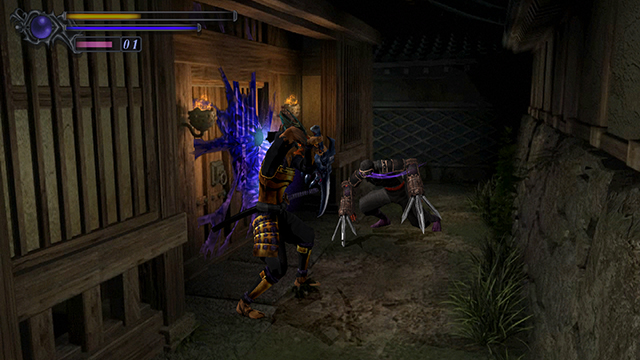
The game’s faulty defensive techniques make wishing for a harder mode a bit, well, harder. Dodging is finicky and oddly tied to specific movements of the analog stick. Blocking can also be slow and get you hit while your longer attack animations play out, which is sluggish but in the guided way that Dark Souls (usually) is. Even though coming to a complete stop to switch weapons or suck up time-limited orbs is ridiculous, it’s only just a part of the mind numbing offense and the inadequate defensive offerings that make the combat as a whole entirely unengaging.
And there’s not much else to the game besides combat. Puzzles are few and far between and often boil down to finding a key and hoofing it back to the appropriate door. Whereas Resident Evil hides its keys behind puzzles, Onimusha isn’t usually as concerned with involving the player. Protagonist Samanosuke is a glorified “gofer,” as he’s usually just going for a key to go back for the door without much happening in between those two points. “Unengaging” may describe the combat but it spread to the game as a whole since it fails to punctuate its beats with much substance.
The awkward camera is pervasive the entire way and not only drags down the gameplay but also the game as a whole. Fixed camera angles make getting clipped by off-screen attacks a depressing regularity and also leads to bizarre shots that don’t always give the best angle. Camera transitions are also jarring as moving the stick forward in one angle can often be backwards in the next, which makes you run back and forth like a damn fool.
While not fully forgivable, it at least added to the atmosphere of the earlier Resident Evil games since it could frame scares and keep the scary zombies just out of view. Horror games at least get some artificial tension as as byproduct of a fixed camera. But an action game doesn’t get those same benefits and, like the stunning lack of checkpoints, is almost wholeheartedly bad for the genre. It’s just clunky and nearly inexcusable in any era past the PS1.
Onimusha Warlords Remastered review – Samur-eyesore
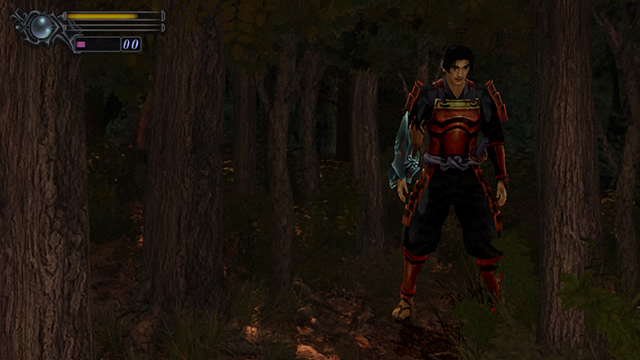
The pre-rendered backgrounds are another inherited aspect from its brief time as an old Resident Evil game. In its day, it gave the game the ability to make more detailed environments since they were essentially “faked.” In the current day, they’re incredibly underwhelming and give the impression that the whole game is being played on a sound stage in Hollywood. This exacerbates the issue, since the character models far outshine the background and give a stark contrast between what “real” and moving around and what’s a flat illusion ripped from the early 2000s.
Environments may often look like they’re on a movie set, but they do well in creating an authentic world similar to some historic Japanese films. The period appropriate buildings and outfits work together with the subtle, tonally consistent soundtrack to craft a cohesive universe that respects its heritage. It may take some creative liberties with its real-life people and contain a few otherworldly aspects, but, while small, it has a sense of time and place that give it its own style.
The game’s story may use its world as a jumping off point, but isn’t served well by just about everything else. The historic drama is told through the tale of saving a princess. Storytelling is quite sparse and uninteresting when it does pop up due to bland characters and the lack of much substance. While it fits in nicely in the current era where games are often too long, Onimusha is too short to ever get going.
Capping off at under four hours, the brief length not only stunts the gameplay progression and disrupts the difficulty curve, but it also negatively impacts the story. Narrative threads have almost zero time to flourish and instead spend all of their time just moving from A to B without any character development or meaningful story beats along the way. Given the simplicity of its princess-saving plot, it’s odd — but apt — to compare Onimusha Warlord’s story to that of an old Mario game but without a cool dude like Toad.
Onimusha Warlords Remastered review – Hara-kiri by circumstance
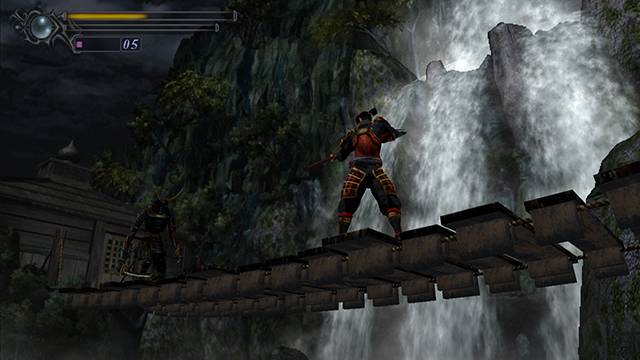
Its antiquated presentation and dated design are part of a bigger optics problem. Resident Evil 2 remake, a full-blown, top to bottom renovation of a classic, comes out about two weeks after this version of Onimusha Warlords, an upscaled port or an old game with a few surface-level touches. It’s a victim of its original release date but Capcom made very few steps in actually addressing how poorly it has aged.
A remaster of this scope can’t give the game a better camera, liven up the combat, or spruce up the tacky pre-rendered backgrounds. It’s a shame too since somewhere in this game lies a decent core that could serve as a fantastic base for a more fully fledged remake willing to go beyond a simple touch-up. There’s room for a full overhaul like this or at least a reskin that would make it more modern. Capcom has done both more than a few times in the past to its other games in its historic stable. With that context, it’s odd that Capcom has done so little to the hibernating series and let this beloved game wither away under the harsh sands of time.
Onimusha Warlords Remastered was reviewed on PS4 via a digital code provided by the publisher.
-
Music and environment create authentic Japanese atmosphere.
-
Slow, dumb enemies.
-
Pre-rendered backgrounds and fixed camera are archaic and hold back the game.
-
Combat is mashy and doesn't pressure you to dig deeper.
-
Shallow story that's over in less than four hours.
